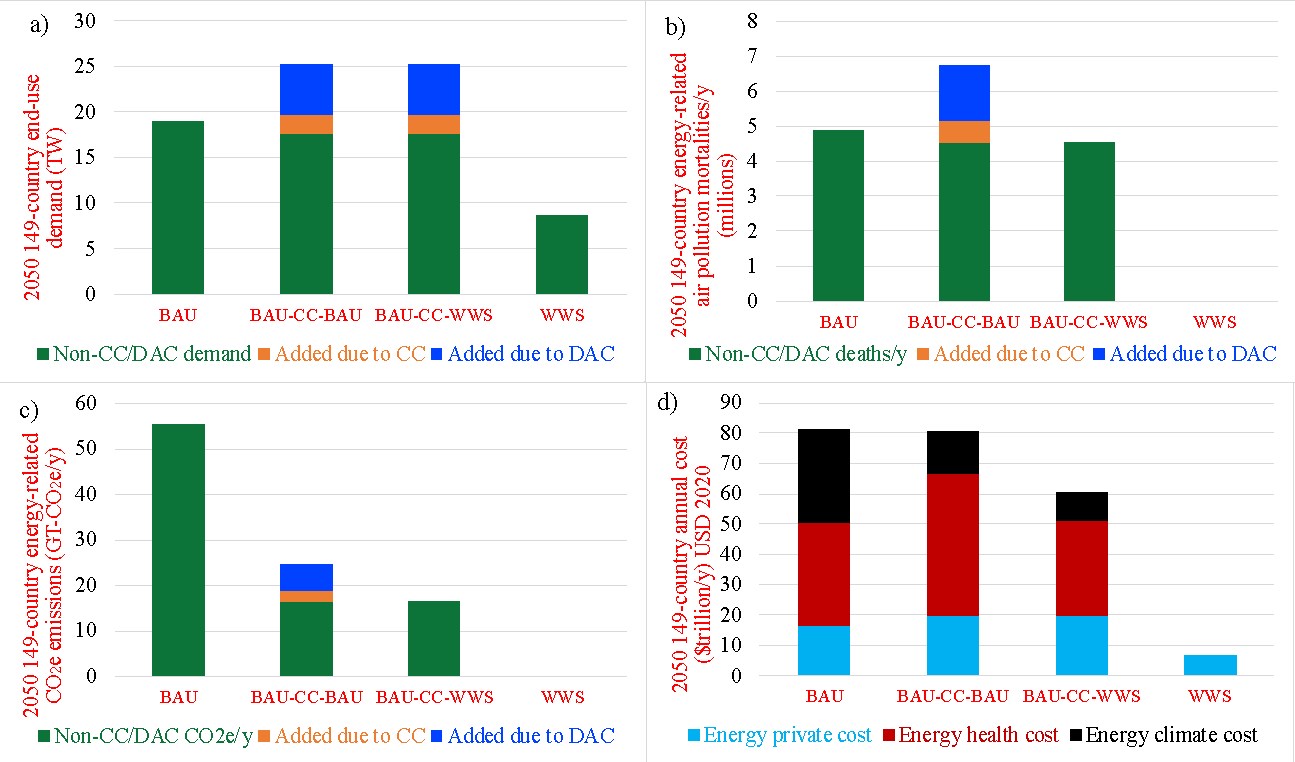 In recent years, there is a frequently mentioned technology among clean energy sources and solutions to reduce carbon emissions: carbon capture. However, according to a new study, carbon capture technology is not only ineffective, but also a more harmful solution than being useful.
In recent years, there is a frequently mentioned technology among clean energy sources and solutions to reduce carbon emissions: carbon capture. However, according to a new study, carbon capture technology is not only ineffective, but also a more harmful solution than being useful.According to the research, Carbon Capture Waste Money
According to a study by scientists from Stanford University, most countries around the world can reduce energy costs, improve air quality and slow down climate change if it provides its energy from its energy completely from wind, sun, geothermal and hydroelectric energy sources until 2050. Moreover, these benefits can be obtained by a much lower part of the cost of carbon dioxide (CO2) capture technologies.
Mark Jacobson, Professor of Construction and Environmental Engineering, the chief writer of the study, says that those who support this technology often adopt the approach of “let’s invest in both”. However, Jacobson says that this is not logical, but the main purpose is to close fossil fuel power plants. Jacobson argues that the investment to capture carbon should be directed to renewable energy projects.
The idea of running carbon capture systems with renewable energy is recently on the agenda. However, according to the researchers, this is unreasonable. When we look at it, why would you spend money and energy to capture a amount of CO2 from the chimney when you really have the same energy and money?
Tonga should not be deducted
 Every year at least seven million people die due to air pollution, hundreds of millions of people are adversely affected. 90 %of air pollution is linked to energy production. Global warming has already caused major damage and scientists emphasize that 80 %of greenhouse gas emissions by 2030 should be eliminated in order to limit the global temperature increase to 1.5 ° C. Between 2035-2050, the remaining emissions should be reset.
Every year at least seven million people die due to air pollution, hundreds of millions of people are adversely affected. 90 %of air pollution is linked to energy production. Global warming has already caused major damage and scientists emphasize that 80 %of greenhouse gas emissions by 2030 should be eliminated in order to limit the global temperature increase to 1.5 ° C. Between 2035-2050, the remaining emissions should be reset.Against these three big problems, fast, low -cost and simultaneous solutions are needed. According to Jacobson, it is nothing more than a waste of time to wait for a “miraculous” technology to emerge or to turn to technologies that may be ineffective or even harmful. Jacobson says that 82 percent of carbon dioxide captured worldwide is used to increase oil conclusions. 30 percent of the carbon dioxide captured in this process is released directly to the atmosphere, while the extra oil obtained, this rate can be reached up to 50 percent to 120 percent in total.
Jacobson underlines that there is a limited time to eliminate humanity -threatening risks such as global warming, air pollution and climate crisis. According to him, useless solutions such as carbon capture technologies and blue hydrogen are supported by the fossil fuel industry. The aim of this industry is to continue the use of coal, oil and fossil gas.
 On the other hand, Jacobson says that the new generation of nuclear energy is not a solution because they have a disadvantage of time and cost. In general, a nuclear power plant to operate at full capacity varies between 10 and 21 years, which for three major problems that require an emergency solution for a very long time. Moreover, the unit is 5 to 8 times more expensive than the new wind and solar energy in terms of energy cost.
On the other hand, Jacobson says that the new generation of nuclear energy is not a solution because they have a disadvantage of time and cost. In general, a nuclear power plant to operate at full capacity varies between 10 and 21 years, which for three major problems that require an emergency solution for a very long time. Moreover, the unit is 5 to 8 times more expensive than the new wind and solar energy in terms of energy cost.Instead of looking for a miraculous technology, the study proposes to focus on wind, water and solar energy (WWS) technologies. According to scientists, these energy systems can solve three basic problems with low cost worldwide when combined with existing electric vehicles, energy storage and modern transmission lines.
For those who do not know, WWS definition, wind energy (terrestrial and over -sea wind energy), water energy (hydroelectric, tide and ocean discharge energy, wave energy, geothermal energy and geothermal heat), solar energy (solar photovoltaic electricity, intensified solar energy and heat, direct sun temperature) contains the energy obtained.
According to scientists, the energy used with WWS worldwide decreases more than 54 percent. This decrease is caused by several main reasons: the fact that electric vehicles are more efficient than fuel vehicles, the more efficient operation of electric heat pumps instead of fuel heating for air and water heating, and the energy of fossil fuels and uranium to obtain uranium by making the industry more efficient thanks to electrification to get up.
On top of that, the WWS system can reduce the an average of 11 percent per unit energy cost by 11 percent to 60 percent of the worldwide energy costs. Of course, researchers advocate this as a solution from the most fundamental to the summit worldwide. Until 2050, they calculate that the front capital required to install such a global WWS system will be $ 58 trillion. However, thanks to an annual energy cost savings of $ 10 trillion, the repayment time will be less than six years.